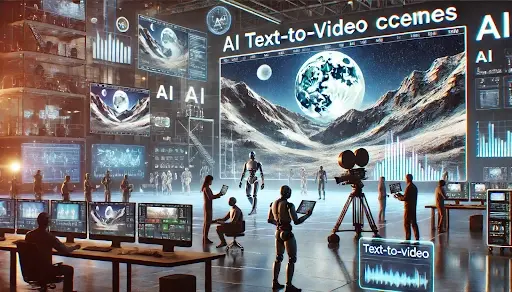Disruption Caused by GenAI: How Do We Respond in the Arts?
The rapid advancements in Generative AI (GenAI) are causing significant disruptions across lots of different industries. Companies are grappling with...
Enterprise adoption of Generative AI (GenAI) has surged, but successful production deployments remain unevenly distributed. In our Q2 2025 Buyer’s Guide, we reviewed dozens of real-world implementations across sectors. The results are clear: while some enterprise functions are generating measurable value at scale, others remain mired in pilot purgatory.
This blog explores three core questions:
Despite widespread experimentation, a few enterprise functions have consistently progressed from PoC to scaled GenAI deployment. These areas share three characteristics: high content throughput, well-defined task boundaries, and strong integration potential.
Support teams are using GenAI assistants to triage tickets, generate resolution suggestions, and surface relevant documentation. EY has embedded ServiceNow’s Now Assist GenAI in its global service desk. The copilot drafts resolution notes, summarizes incidents, and has already authored 50-plus knowledge articles, saving agents about 30 minutes per ticket.
3. Marketing and Content Operations
GenAI is helping marketers generate first drafts, iterate on creative concepts, and maintain brand alignment across campaigns. Coca-Cola collaborated with Bain and OpenAI to deploy GenAI tools that generate ad copy, slogan variations, and product packaging concepts. These were fed into their global content system to enable fast regional localization.
4. Legal and Risk Functions
Legal departments are using GenAI to accelerate contract review, case research, and compliance documentation. Salesforce’s in-house legal-ops team runs a generative-AI assistant that drafts and red-lines contracts, analyses unstructured data and has already trimmed outside-counsel spend by more than $5 million.
5. Knowledge Management and Search
Enterprises are deploying GenAI copilots to retrieve insights from internal documentation and streamline information access. Morgan Stanley built a custom GPT-powered assistant trained on 100,000+ internal research reports. The tool integrates into the company’s wealth management advisor platform, allowing advisors to ask natural language questions and get synthesized answers grounded in proprietary research.
Scaled GenAI deployments do not happen by accident. They are built on clear value targets, embedded architecture, and intentional change management. Here’s what leading organizations are doing, and how your enterprise can follow suit:
Scaled enterprises do not launch standalone copilots, they integrate GenAI into core systems. Morgan Stanley’s GPT-based assistant is built directly into advisor tools, reducing research time by delivering real-time insights from proprietary databases. Embedding GenAI into systems of record drives adoption and unlocks operational leverage.
Winning teams treat prompts like product artifacts. Klarna seems to be using a centralized prompt library to support its customer service chatbot across 23 languages, ensuring consistency and reducing drift. Industrializing prompt workflows ensures quality, scalability, and long-term maintainability.
Accuracy problems often stem from model hallucination. Enterprises like PwC have adopted retrieval-augmented generation (RAG) pipelines that ground LLM responses in verified internal content. Making knowledge retrievability a core architectural pillar enables accuracy and trust in GenAI outputs.
Compliance is not a barrier when it is embedded in design. Pfizer’s internal GenAI programs include audit logging, model usage tracking, and pre-approved prompt sets. These practices accelerate legal sign-off. Treating governance as part of infrastructure embeds trust and reduces legal friction at scale.
Executives do not fund what they cannot measure. GitHub Copilot’s success story is not just anecdotal, it is built on data showing faster coding for enterprise teams. Linking GenAI efforts to performance metrics secures ongoing executive sponsorship.
Prompt engineering is not just for data scientists. Visa launched a company-wide GenAI learning series that included role-based prompt training for marketing, product, and legal teams. Building fluency across functions accelerates maturity and enterprise readiness.
Instacart’s Ask Instacart routes queries to OpenAI’s GPT-4 or to the grocer’s own fine-tuned models, selecting whichever yields the best grocery-search answer while keeping a single user interface. This multi-model architecture prevents vendor lock-in and lets Instacart tune cost and quality case-by-case. Establishing a model ecosystem enables flexibility, risk management, and alignment with evolving business priorities.
As GenAI matures into a core enterprise capability, the differentiator is not who is experimenting, it is who is executing. The next wave of enterprise value will come not from new models, but from integrated, governed, and scaled deployments.

The rapid advancements in Generative AI (GenAI) are causing significant disruptions across lots of different industries. Companies are grappling with...

When we talk about Generative AI (GenAI), innovation often takes center stage. In 2024, we were overwhelmed with the barrage of new products and...

Generative AI has moved past experimentation and into strategic focus. Enterprises are launching pilots, building prototypes, and hitting a wall. The...
Trusted by companies and vendors around the globe - we help you cut through the noise and stay informed so you can unlock the transformative power of GenAI .
Join us at this year's Generative AI World! Hear from enterprise AI leaders who are achieving meaningful ROI with their GenAI initiatives and connect in-person with the GAI Insights members community including C-suite executives, enterprise AI leaders, investors, and startup founders around the world